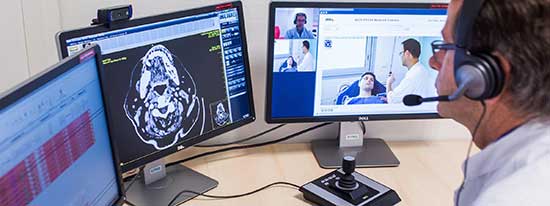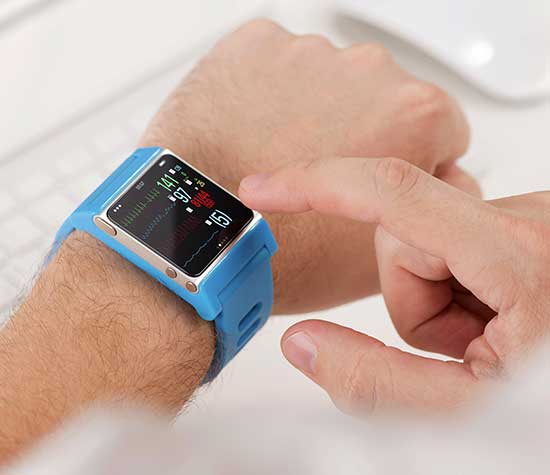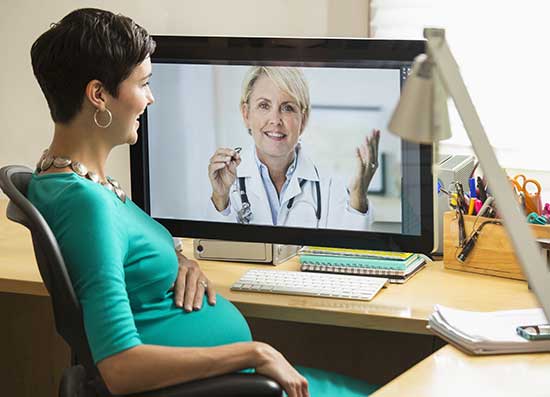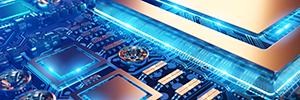Healthcare sector is gradually achieving digital integration at all steps of a patient’s journey from lookout for symptomatic information, diagnosis, treatment and follow ups. Automation has embedded itself within various health care operations. The past two decades have seen the successful launch of various eInitiatives that’ve revolutionised most aspects of life, and their effectsare now being felt in the sphere of healthcare too. In fact, eHealth has immense potential to improve the quality and value of healthcare services delivery and, making available ample employment opportunities for engineering professionals globally. Such trends are gaining traction in India too.

Innovations in Information and Communication technology (ICT)are redefining medical processesin the country from patient registration to data monitoring, from lab tests to self-care tools.The technology, apart from sharing information provideshelp in diagnostics, management, counselling, education, and support.It has begun to replace conventional monitoring and recording systems, with people given the option of undergoing full consultation in the privacy of their own homes. Thanks to technological advancements in healthcare, services have been taken out of the confines of hospital walls, labs and integrated with user-friendly, accessible electronic devices, providing crucial linkage between healthcare providers and patients.
Broadly,eHealth encompasses medical informatics, health services and information that are delivered or enhanced through the Internet of Things (IoT) and related technologies. Continuous technological developments in eHealth save lives and improve the quality of life.These havereduced costs and medical errors, increased efficiency of information flow and most importantly, empowered healthcare consumers in their healthcare decisions.
Let’s look at the latest technological innovations in eHealth, and the benefits they bring to both patients and professionals:
mHealth
Mobile health (mhealth) refers to healthcare and medical information supported by mobile technology. Though mobile technology has touched virtually every aspect of our lives, entry of mobile devices in the healthcare arena is a recent development. These smart technologies include smart phones, tablet computers, iPads and wearable devices. Their use is not only restricted to healthcare providers, but extended to patients and associated businesses in medical care.
Mobile health has freed healthcare devices of wires and cords and enabled physicians and patients alike to check on healthcare processes on-the-go. They allow healthcare providers to more freely access Electronic Medical Records (EMR) and Electronic Health Record (EHR).
Improved communication helps medical billers send text message alerts about payment schedules and outstanding bills. It also reduces snail mail, paper use, and time spent on phone calls.
Armed with features such as capabilities for computing, camera, interfaces, internet browsing, emailing, text and instant messaging, and Geographical Positioning System (GPS), smart phones have changed the face of healthcare.
Smart devices allow completion of tasks in remote locations. Through them, a physician can access a patient’s EHR, review medical histories, send follow-up emails, and even complete prescriptions.
Significantly, healthcare apps are constantly being developed for both healthcare professionals and patient use. Theyprovide professionals, administrators, and patients greater flexibility and cost-effectiveness. With these devices, users have the ability to access from anywhere, look up resources from anywhere such as drug names, diagnoses and treatment options, consult data just before or during the treatment like surgery or any other type of medical intervention.
Digitalization of Health Records
The EMR and EHR are electronic versions of the medical record. While EMR is restricted to within the facility, EHR is interlinked between facilities and can be accessed from outside using Internet through wired or wireless technology. EHR can help the physician to view medical record electronically including medical histories, lab reports, and diagnostic imaging reports. This data becomes a part of the digital medical record. With the help of this inbuilt database, the doctor makes evidence-based rather than opinion-based decision, called Clinical Decision Support (CDS) system. Subsequently, the doctor can write prescriptions by selecting the medicines from the drop down list that avoids illegible handwriting.
The introduction of EHR in replacing paper records has been a game changer for allied healthcare professionals such asnurses and technicians. They are now able to insert patient data such as vital signs, weight, test results, etc. into a central, digitized system. Similarly, medical billers and coders use EHRs for scheduling appointments, updating patient records with diagnostic codes, and submitting medical claims.
EHR technology has resulted in enhanced patient care as it can automatically alert the treating physician to potential issues such as allergies or intolerances to certain medicines. EHR makes available invaluable data to clinical researchers, which advances medical knowledge and the development of new treatments for common health problems. Also, a central and standardized system throughout the entire healthcare industry can identify a viral or bacterial infection quickly. It can help detect how widespread an outbreak is, enabling preventative measures to be put in place much more quickly.
Entering data into a computerized system saves time and reduces the risk of errors in patient data and financial details. It makes patient records accessible digitally in an instant, increasing efficiency and productivity.The shift from paper to electronic health records considerably reduces the cost of outpatient care.
Touch Screens
Touch screens have enhanced usability in hospital settings where clinicians use gloves or other protective apparel (ER, surgery) or where small number of repetitive tasks need to be done quickly. Touching the icon for the function results in innovative user interface. Multi-touch rotations allow easy navigation and 3D diagnostic models (cardiac CT scan).Touch screens can be used by even less computer literate persons for some medical functionalities, such as accessing EMR/EHR, lab results, etc. They are also useful as patients’ kiosks, and bedside and homecare devices.
Digital Ink
Technologies such as Microsoft Ink facilitate writing on a screen akin to a piece of paper. Integrated into EMR/HER, this technology can help annotate diagnostic images such as X-ray and MRI scans to indicate important features. It inputs text naturally, especially when patientsare unable to communicate but through digital ink can write a note to the doctor to explain their situation.

With this technology, it’s possible to draw images such as in surgery to communicate between the doctor and the patient. Doctor can authenticate reports quickly and easily by placing signatures just like with wet ink.
Voice Recognition
Voice recognition does away with the need for medical transcription where the transcriber would convert doctor’s voice record into readable text. Under this new technology, doctor can dictate directly into a computer using microphone that recognizes the spoken words and translates them into text. Subsequently, the doctor can proofread it on screen and digitally sign it. Thus, the report can eitherbe printed or placed in the medical chart or electronically in EMR/EHR.
Patient Portals
With portal technology, physicians and patients are able to access medical records and interact online.It allows patients to become more closely involved and better educated about their requirements. In addition to increasing access and availability of medical information, portal technology can make patients active participants in their own care.

Self-service kiosks
Similar to portal technology, automated self-service kiosks can help expedite processes like paying fees, checking identification, signing paperwork and other registration requirements without having to talk to anyone.
Nanomedicine
Under nanomedicine, a small capsule containing nanodevices, such as light source and a camera, is ingested in the internal organs. It emits radio signals that are captured by a receiver worn by patient on a belt around the vest. Nanodevices are particularly useful in microsurgeries of eyes, blood vessels and in tissue regeneration where they release growth chemicals to catalyse tissue healing. They also controlrelease of hormones, enzymes or therapeutic chemicals at the selected sites. They can be designed to be placed under the skin to monitor blood glucose and release insulin, and also placed in blood vessels to monitor blood pressure and release medication accordingly.
Efforts are underway to help regenerate neurons (nerves) and brain cells using special nanodevices. They can also be used to repair DNA or replace the defective part of DNA using nanodevices that can carry correct DNA chunk and be placed at the defective part. The use of nanodevices in the genome analysis is also under investigation.
Sensors and wearable technology
Wearable medical devices and sensors also help in patient monitoring from remote. For instance, an alert is sent to a care provider when a patient falls down; it can also include a bandage that can detect skin pH levels to communicate if a cut is getting infected.
Geographical Positioning System (GPS)
The use of Global Positioning System (GPS) in healthcare includes tracking the location of elderly, especially suffering from Alzheimer’s disease and those living alone; monitoring their physical activities and health conditions.
Real-time locating services
Real-time locating servicessuch asRadio Frequency Identification (RFID) is a fast developing technology that uses radio waves for data collection and transfer without human intervention. RFID tags attached to patients provide more extensive patient identification than traditional bar coding can, tracking and locating capital equipment within the hospital. Real time devices help hospitals focus on efficiency and instantly identify problem areas.

Telemedicine
Telemedicine, the exchange of medical information from one site to another via electronic communications, is a growing field with expanding possibilities. Telemedicine includes a growing variety of applications and services using two-way video consultations, transmission of healthcare data like electrocardiograms (ECGs), smart phones, wireless tools and other forms of telecommunication technology.

Telemedicine clinics reduce time out of office costs for employees and employers by eliminating the need to leave work to go to a primary care office.As they can monitor vital signs and symptoms remotely, there are even plans to develop remote ultrasound technology.
Telehealth results in less crowded waiting rooms, easing the pressure on front desk teams, shorter waiting times for patients, and improved efficiency leading to savings
Cloud Computing
Cloud computing, where an application running on a cloud can turn on more servers in response to spike in demand for computing resources, is one of the most innovative products in healthcare technology today. In Cloud, healthcare professionals and patients are able to access any files and data, and use applications from any internet-enabled device.
This technology allows for huge quantum of information to be stored at a low cost, without the limitations or expense of additional hardware or servers. Cloud storage helps protect against the loss of sensitive data with strong backup and recovery services.
The Cloud is an invaluable tool for medical research, data analysis, and health information exchange. Its ability to share big data easily has helped the development of life-saving drugs.
Social Media
Social media has become an effective tool for healthcare organisations for communicating and sharing information with their customers through a wide variety of content formats such as text, photos, and video. Social media is also used to enhance marketing, branding, different levels of engagement, and providing healthcare customer services.
Mobile Learning (mLearning)

Mobile devices such as tablets and smartphones are enabling health organisations to provide learners with a whole new range of learning opportunities on health maintenance, balanced dieting, weight loss, management of chronic diseases, etc.
Virtual Clinics/Doctors
Virtual clinics or online clinics are becoming very popular as they provide 24-hour online access for patients to healthcare providers (clinicians) who answer questions to patients in real time.

Pharmacogenomics/genome sequencing
Personalized medicine is the in-thing todayas tailoring treatment plans forindividuals and anticipating the onset of certain diseases offers promising benefits for healthcare efficiency and diagnostic accuracy. It can help reduce the billions of dollars in excess healthcare spending due to adverse drug events, misdiagnoses, readmissions and other unnecessary costs.
Tools for big data analysis for pharmacogenomics are underdevelopment. In fact, data analytics and data aggregation for the purpose of population health may be the next big advancement on the horizon. To sum up Thus, healthcare today is in for transformation with eHealth technologies allowing remote monitoring of patients and their access to healthcare, health data collection, patient identification, medicine administration, medicationcompliance, information exchange, and many more uses.
However, hospitals need to be cautious when integrating eHealth technologies to ensure that human to human communication is not entirely eliminated. Also, while having a central point for all data information may be extremely useful, over-dependence on it introduces the risk of important information being unavailable in emergencies. If everything you need is online, there could be serious repercussions in case there are connectivity or bandwidth problems.
Risk of medical records protection is another concern. In the largest healthcare-related data theft in 2015, hackers stole records for almost 80 million customers of insurance giant Anthem and employees. Such thefts take place as stolen health credentials of patients can be used to create fake IDs to purchase medical equipment or drugs, or even to submit false insurance claims.
However, the impact of healthcaretechnology is overall positive, with the benefits far outweighing any potential disadvantages.
Filed Under: ARM., Tech Articles


Questions related to this article?
👉Ask and discuss on Electro-Tech-Online.com and EDAboard.com forums.
Tell Us What You Think!!
You must be logged in to post a comment.